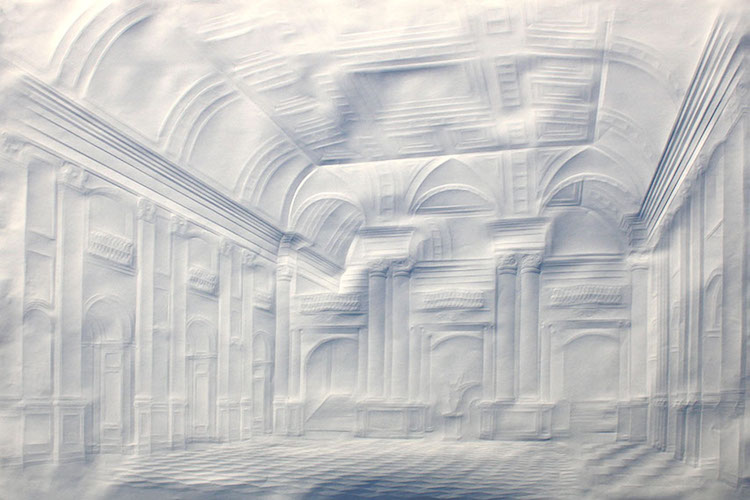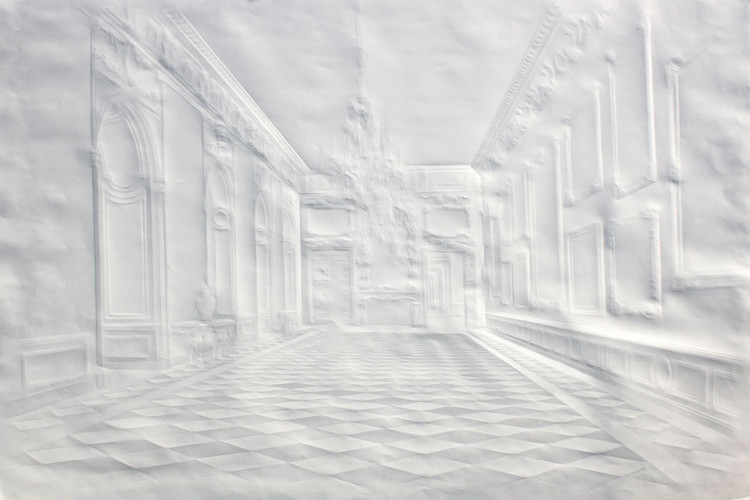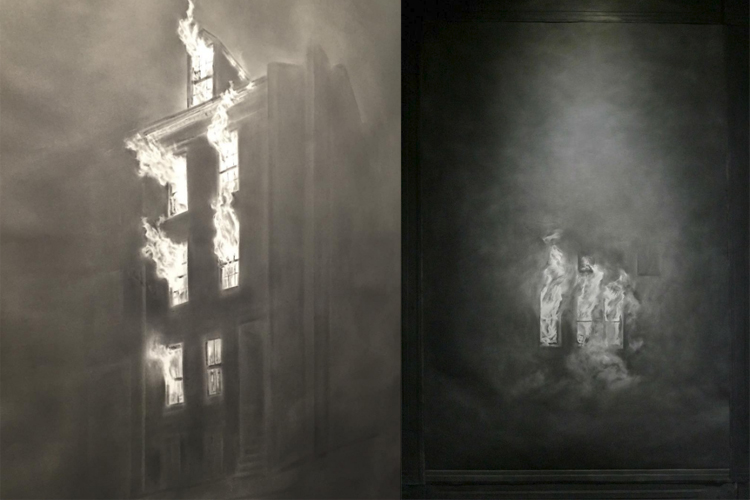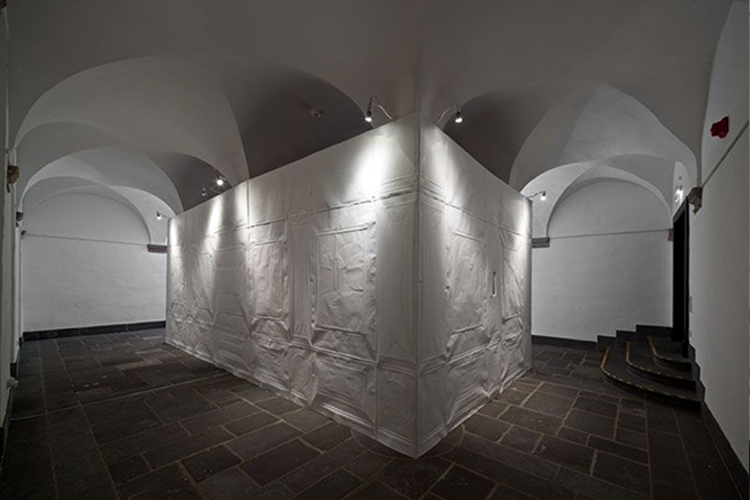Architecture is the main theme of Simon Schubert’s work, who is obsessed with the representation of his art through the paper.
Born in 1976, this German has become a famous contemporary artist thanks to his peculiar artwork on paper. Simon Schubert uses completely blank sheets to which he gives life through lights, shadows and figures that are created when he wets the paper and folds it brilliantly.
 He folds the paper brilliantly to recreate the architectural details
He folds the paper brilliantly to recreate the architectural details
It’s a complicated technique due to the delicacy of the material, especially when it’s wet. However, Simon Schubert obtains amazing results. Intricate stairs, amazing hanging lamps, interiors of majestic buildings that he paints in excruciating detail to delight the spectator.
He studied in the Arts Academy of Düsseldorf, but his influences goes beyond art and design. In the sphere of literature, he claims to have been inspired by the playwrights Samuel Beckett and Edgar Allan Poe. As an innovator, the surrealistic icon René Magritte has also achieved to stampan art that transmits feelings. Loneliness, isolation, loss, anxiety. The flawless white or the trail of the watermarks on the paper provoke an almost-ghostly effect, highlightedby the variety of architectural spaces he chooses to represent.
The interiors of the buildingsin late 19th centurycontribute to the magical labour of creating an enchanted-house environment that characterises his recreations. The concept of disappearance is a recurrent theme in his artwork because the delicacy of the paper and the subtlety it provides make it seem like being on the verge of disintegration, as if it were a dream. Fragile and momentary, the game of lights and shadows grants dimensionality to the artwork.
 The image represents the interior of the Stadtschloss, an old baroque royal palace located in the centre of Berlin, which was torn down when the city was divided during the II World War
The image represents the interior of the Stadtschloss, an old baroque royal palace located in the centre of Berlin, which was torn down when the city was divided during the II World War
 The spacious rooms of the palace seem to capture the spectator
The spacious rooms of the palace seem to capture the spectator
In the spectator’s eyes, it seems possible to penetrate into a room that captures you. There’s no exit to the continuous white, to the empty space or the closed doors that characterise his portraits.
Besides the representations on paper, the work of Schubert also included sculptures and installations, which are faithful to his particular way of showing the world. On 2015, art lover had the opportunity to enjoy his artwork in museums and galleries in Wolfsburg, Köln and Berlin (Germany), New York or Stresa (Italy).
 Simon Schubert, Untitled (Poe House Boston), Foley Gallery, New York
Simon Schubert, Untitled (Poe House Boston), Foley Gallery, New York
 Simon Schubert, Blind Space (Installation View III), 2013, Abtei Brauweiler. Photograph by Maurice Cox
Simon Schubert, Blind Space (Installation View III), 2013, Abtei Brauweiler. Photograph by Maurice Cox
An original view that catches the attention of the most sceptic. As if you were captured in a mansion of a movie, you seem to be able to walk across the lonely corridors as in a fantasy mysterious cloud. That is the magical world to which the artwork transports us as if it were a mysterious prince, a worthy successor of his literary influence.



